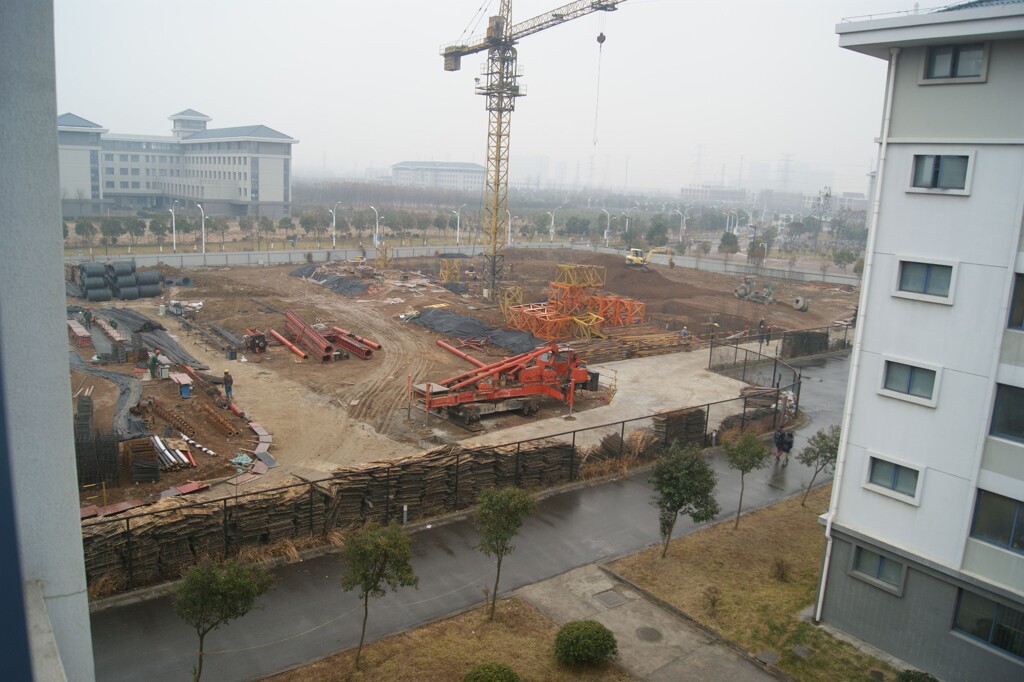Site Safety In Winter | Things To Consider when Working in the Cold
Working at height utilising access equipment requires rigorous training due to the many dangers inherent to this type of work; these dangers can only be exacerbated when working on a construction site.
Construction sites are a notoriously dangerous place to work at the best of times, but with the added hazard of cold, wet weather and poor light conditions, you have a recipe for disaster. According to HSE government statistics, out of 142 work related fatalities in the 2020/2021 period, 39 were attributed to the construction industry.

Working at height and working in construction frequently go hand in hand, the dangers that workers face on a daily basis include:
- The risk of trips, slips and falls
- The risk of falling from height or being struck by falling objects
- The risk of working with heavy machinery
- The risk of working with heavy and/or moving objects
Each of these dangers can be aggravated by working in cold weather.
Cold weather can seriously hinder workers’ performance at their tasks and put them at risk of “cold stress”. Cold stress is a term that describes a variety of conditions that can be suffered by people exposed to the cold for prolonged periods of time. These conditions include hypothermia, chilblains, frostbite and trench foot.
The very nature of construction work and working at height in the winter put workers at a high risk of cold stress.
Guidelines for improving site safety in the winter
The government has issued certain guidelines for working in temperatures below 13°C; however, there is no “legal minimum working temperature” in the UK, so good training and common sense must prevail when workers are faced with wintery conditions.
Contractors and supervisors must understand the complexities of working outdoors and/or at height in cold weather conditions and ensure that personnel are provided with:
- The correct personal protective equipment
- The correct training for working in cold conditions
- Facilities where workers can escape the elements, warm up and consume warm beverages
They may also want to consider:
- Delaying the work if the conditions pose a serious hazard
- Introducing more frequent breaks
- Increasing personnel rotation
- Educating workers about recognising the specific warming signs of cold stress (in themselves and also in colleagues)
Winter site safety: the risks involving tools and heavy machinery.
As well as the employer’s role in minimising the working hazards on the winter construction site, there are some aspects which each worker should take into account and communicate to the manager and team if they are a consideration for working in the cold. These considerations may apply to the use of heavy machinery, plant equipment, access towers or access platforms onsite.
Each skilled professional who regularly uses plant and/or access equipment should have been fully trained in the optimal working conditions for their machine or tool, as well as in the specific hazards of operating them in the cold weather.
Slips on scaffolding can be more of a hazard in icy conditions, so care must be taken to ensure that non-slip surfaces are used wherever possible and that handrails are carefully fitted. Some heavy lifting or access machines may have a minimum operating temperature and may require different operating parameters for working in cold temperatures. Diesel fuel can gel in extreme cold weather and batteries can become stressed. Machine operators should be aware of any variables that affect a machine’s performance and operate machines in accordance with the manufacturer’s instructions.
Machine performance is not just the responsibility of the operator, in cold weather machines must be kept in optimal working order as they are far more susceptible to breakdowns in the cold.
Engineers must be extremely vigilant and all machines should be provided to the worksite with a thorough pre-delivery inspection (PDI) as well as an up to date LOLER examination (to be carried out every six months).
As well as this, management or HR should check that all personnel have the correct training for working in cold conditions and offer refresher courses or extra training wherever it may be necessary.
Everyone can help improve safety when working in cold conditions
The winter construction site is a very harsh environment that puts a strain on equipment and machinery, but also on the workers who have to brave poor lighting, frozen ground and a variety of other torturous conditions.
Taking care to correctly prepare your site and workers is the key to a successful project when working on a construction site in winter. Also, the benefit of choosing suppliers who understand these complexities of working in the cold can make all the difference to your project.
If you are interested in hiring access equipment, plant equipment or tools, get in touch with X-Hire group today.
Our team of experts can help you source the perfect equipment for your project, no matter the weather. Click here for more information.
